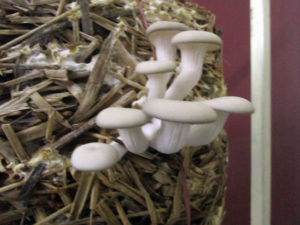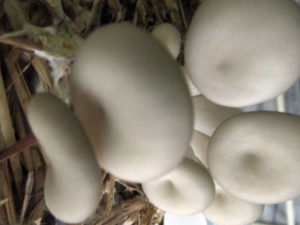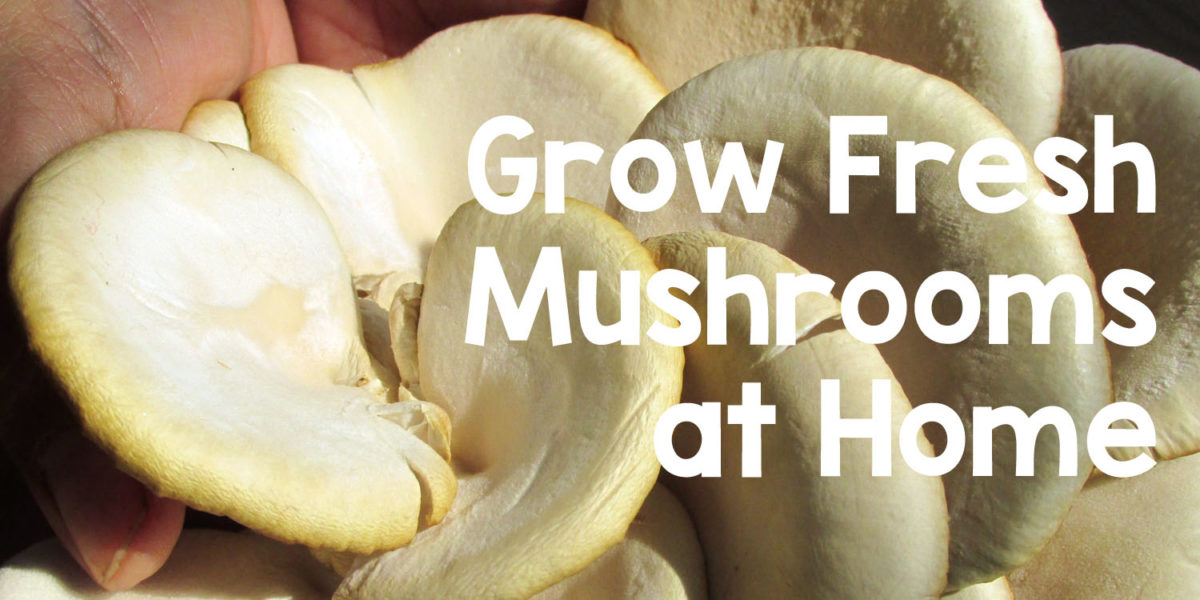Terrace gardening is all about using unused space at your home to grow vegetables and greens. No matter what space you use, be it balcony or terrace or windowsill, sunlight availability is a basic requirement for growing any plant. But mushrooms are something that you grow without sunlight in indoor spaces. They are also very easy to grow and score very high on nutrition scale. They have high iron and protein content and zero cholesterol and low calorific value. Mushrooms are grown on organic waste and the water requirement is very low. In this post on How to grow mushrooms at home I’ll guide you on how you can easily grow oyster mushrooms, which has the maximum bio efficiency (output weight to input weight ratio) among all mushrooms.

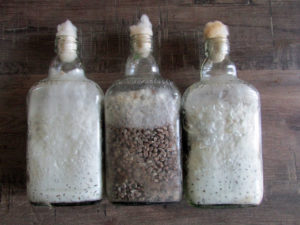
Oyster Mushrooms
The reason I chose to write about Oyster mushrooms is the fact that not only they have the highest bio efficiency (80%-120%), they are the simplest to grow and always give consistent production. So if you have never grown any kind of mushrooms, Oyster is the one you must start with. The species name of oyster mushroom is Pleurotus. There are a few popular ones that are grown around India. Couple of them are,
- Pleurotus Sajar Caju – High temperature tolerance. It’s a little grey in color. Bio Efficiency is 80-100%.
- Pleurotus Florida – Winter Variety. Its white in color. Bio efficiency is 100%
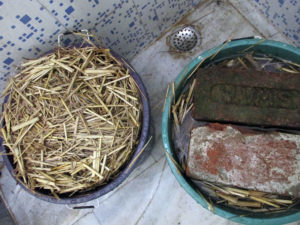
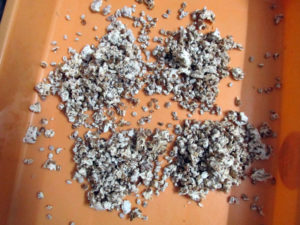
Requirements for growing Oyster mushrooms
Inputs
For 1 standard size bag of 40 cm x 80 cm the following materials are needed.
- Straw – 2 kg of aged and well dried paddy straw. The straw must be thick, hard, straight and old. While cutting the straw retain as much base as possible
- Spawn – 200g (available in 1 bottle)
- Polythene bag (open from both sides) – 40 x 80 cm
- Water
Climatic Requirements
- Temperature: 20-38° Celsius
- Pleurotus Sajar Caju – 25-30° Season is July to Feb
- Pleurotus Florida – 20-25° Season is Nov to Jan
- Relative Humidity: 85-90%
- Light: 200 Lux, which means the amount of light you would get if you have all your windows closed and covered with curtains.
- pH: 6.5 – 7.0
- Substrate Moisture” 50-55%. If bed dries out too quickly or it is watered often the production drops.
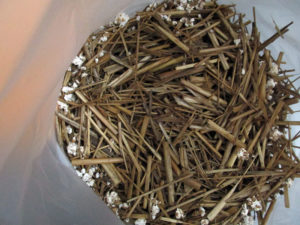

How to grow Oyster mushrooms at home
Preparing Paddy Straw
- Cut the straw to 2 inch pieces and soak in water tank for 6 to 8 hours. It should be completely submerged in water.
- Drain the water from the tank. Toxins from the straw are released in the water. So the water looks yellow.
- Let excess moisture drain.
- The straw should be dried to about 50-55% moisture content. To check squeeze the straw hard. If no water is squeezed out but palms become just moist then it is at approx 50-55% moisture.
Preparing Bags
- Take out the spawn from the bottle using a metal wire onto a tray.
- Tie one end of the bag.
- Place ¼ of the straw inside.
- Now place ¼ spawn on the sides next to the wall of the bag.
- Repeat above two steps three more times till all the spawn is used up.
- Now press the straw with your palms and tie the bag on top after taking out all air from the bag.
- Make 25-30 holes around the bag with a 2-3 mm thick needle.
- Keep it in a cool and dark place for 15 days. Mycelium growth would have taken place in this time. It would look like a spider web covered cylinder of straw.
- Open the bag and hang the paddy straw bundle. You can start watering it with a hand held sprayer after 2 days of opening the bag.
- In another 7 days pin heads will appear. These will grow fast and turn into full sized mushrooms. Harvest can continue upto a month after opening the bag.
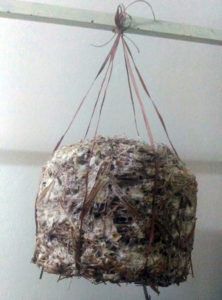
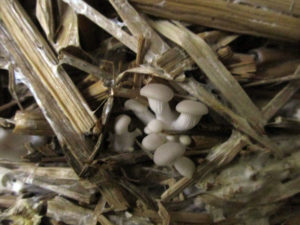
Oyster mushroom is easy to grow, but you can often fail if the conditions in which you grow them is not hygienic. Always clean and sanitize the equipment you are using for better production. Keep your hands clean while handling the spawn and the bags. Good quality straw makes a lot of difference in order to grow mushrooms at home. You’ll get very low production if the straw is of inferior quality. Hence make sure you get good paddy straw as describe above for your bags. And last but not the least maintaining proper moisture level and light also plays a big role in the production. But these are things that come with experience. The more mushrooms you grow the better you grow them.
